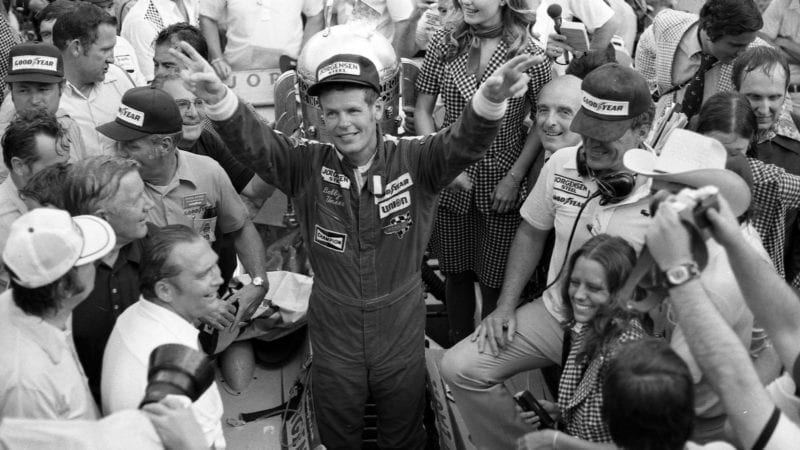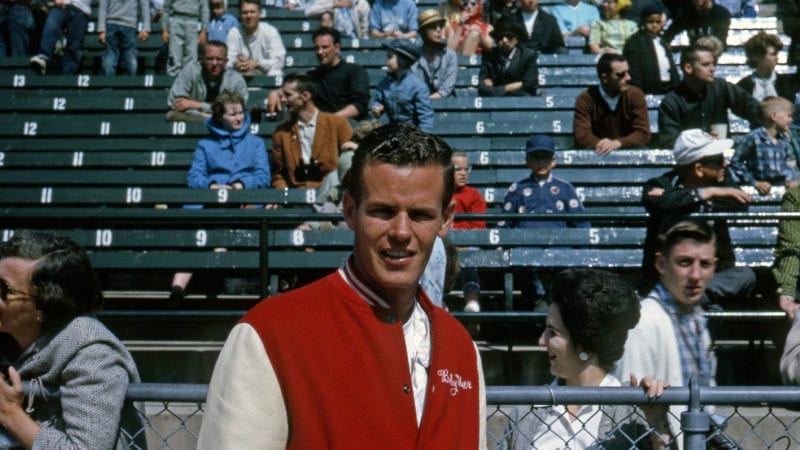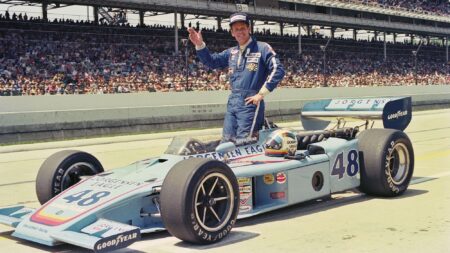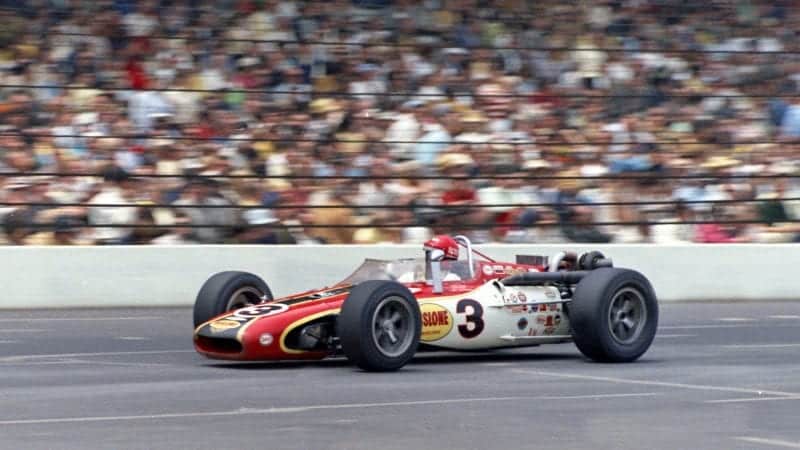Of course, Unser was already 45 years old by the time he teamed up with immensely quick Mears, and he felt he needed an edge – which he earned by fashioning a makeshift wind tunnel in his garage and using it to help transform the flat-bottom Penske PC6 into the ground-effects PC7. At Indy in 1979, Unser was leading when he lost top gear with 20 laps to go, and Mears – in a PC6, ironically – inherited the win.
Two years later, Unser finally got his third Indy victory, but not without controversy. Sunday night, long after he drank from the traditional bottle of milk in Victory Lane, Unser was penalised for passing eight cars under a yellow flag, and USAC awarded the race to second-place finisher Mario Andretti. More than four months passed before an appeals board reversed the decision, and three decades later, Unser was STILL smoldering about the affair.
Unser blamed Andretti for trying to steal a race that he’d lost on the track; Jackie Stewart and ABC for fanning the flames of the controversy with after-the-fact commentary on the tape-delayed television broadcast; and chief steward Tom Binford and USAC for playing politics and general ineptitude. And while he has had nothing but the highest praise for Roger Penske, Unser was disappointed that his boss refused to pursue legal action against any of their antagonists.




